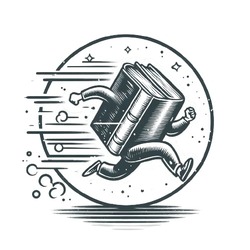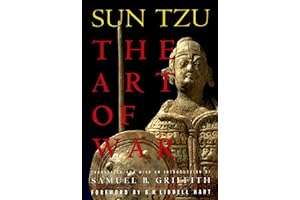One Sentence Summary
The Art of War by Sun Tzu is an ancient Chinese military treatise that provides strategic principles and insights on how to achieve victory in any war.
Book Genre
Non-fiction, military strategy, philosophy
Main Topic of the Book
The main topic of the book is the tactics and strategies for achieving success in warfare, with an emphasis on the importance of understanding oneself, the enemy, and the terrain.
Key Ideas
- The importance of thorough planning and preparation before engaging in any conflict.
- The power of understanding and adapting to the enemy’s strengths and weaknesses.
- The significance of strong leadership and effective communication in carrying out a successful battle.
- The use of deception and manipulation as key tools in warfare.
- The role of flexibility and adaptability in achieving victory.
- The concept of winning a war without having to engage in direct conflict.
Main Parts of the Book and a Short Summary
Part 1: Laying Plans
This section emphasizes the importance of thorough planning before entering any war. It stresses the need to know oneself, the enemy, and the terrain in order to devise a winning strategy.
Part 2: Waging War
Here, Sun Tzu discusses the various factors that should be considered in preparing for a battle, including timing, positioning, and the use of different types of forces. He also emphasizes the importance of adapting one’s strategy to the specific circumstances of the war.
Part 3: Attack by Stratagem
This section explores the use of deception and the art of manipulating the enemy’s perceptions in order to gain an advantage in warfare.
Part 4: Tactical Dispositions
In this part, Sun Tzu focuses on the importance of military leadership and communication in achieving victory. He stresses the need for leaders to be knowledgeable and strategic in their decision-making, and to effectively communicate their plans to their troops.
Part 5: Energy
This section emphasizes the role of momentum, using speed and timing to one’s advantage, and the importance of taking swift and decisive action in warfare.
Part 6: Weak Points and Strong
Here, Sun Tzu discusses the importance of identifying and exploiting an enemy’s weaknesses and avoiding one’s own weaknesses in battle.
Part 7: Maneuvering
This final part covers the importance of understanding and utilizing the terrain in warfare, as well as the benefits of adaptability and surprise in achieving victory.
Key Takeaways
- The importance of thorough planning and preparation.
- The power of understanding and adapting to the enemy.
- The significance of strong leadership and communication.
- The use of deception and manipulation as tools in warfare.
- The role of adaptability and flexibility in achieving success.
Author’s Background and Qualifications
Sun Tzu is a Chinese military strategist who lived during the Spring and Autumn period of ancient China, roughly between 771-476 BC. He is believed to be the author of The Art of War, although there is some debate over this. Sun Tzu has been revered as a master strategist and his teachings have been studied and applied by military leaders throughout history.
Target Audience
The target audience for The Art of War is anyone seeking to understand the principles and strategies of warfare. It has been studied by military leaders, business executives, and others seeking to gain a competitive edge in any field.
Publisher and First Publication Date
The Art of War was published by the Sun Wu Publishing company in China, but the original publication date and publisher are unknown. The book was later translated and published in various languages, with the first English translation by British scholar Lionel Giles in 1910.

